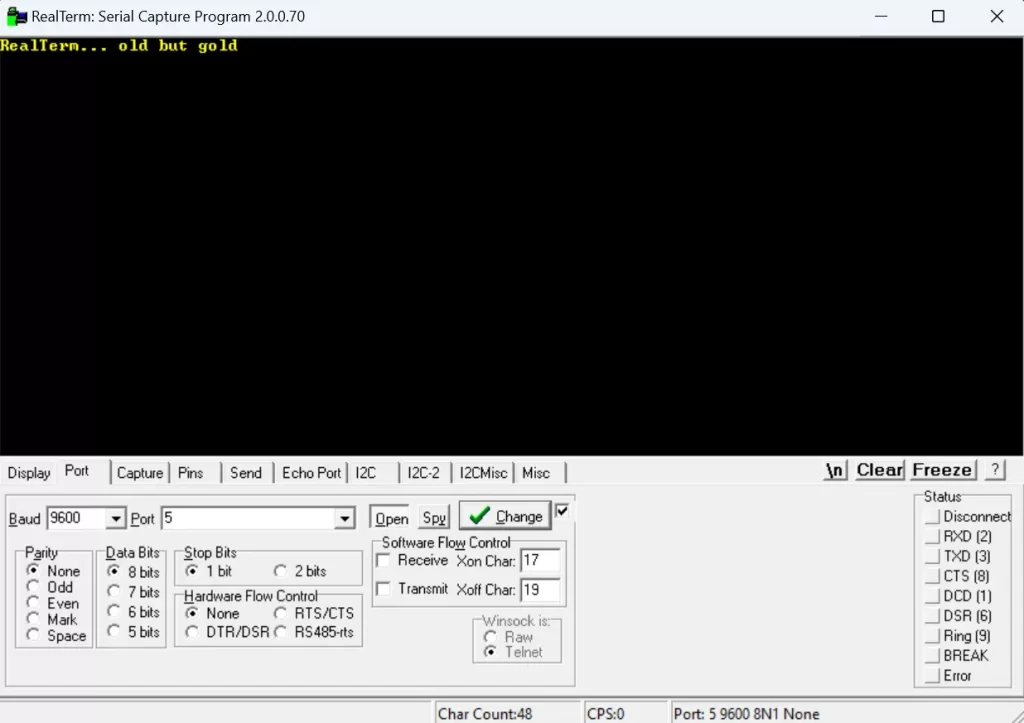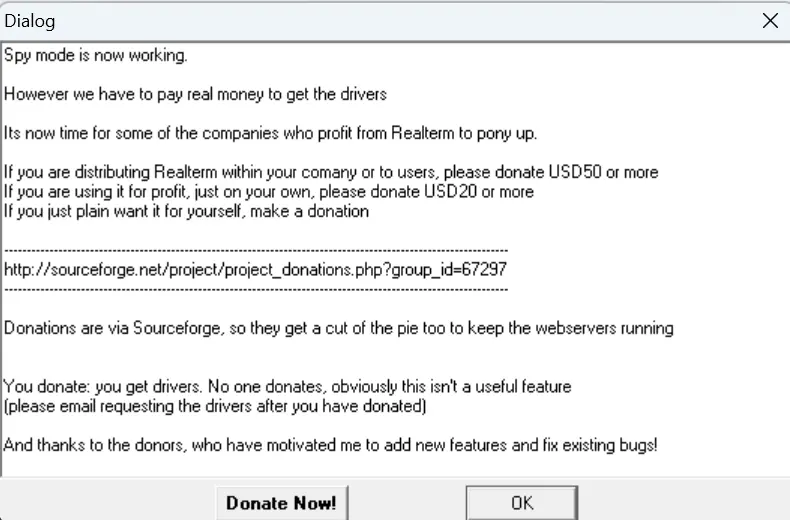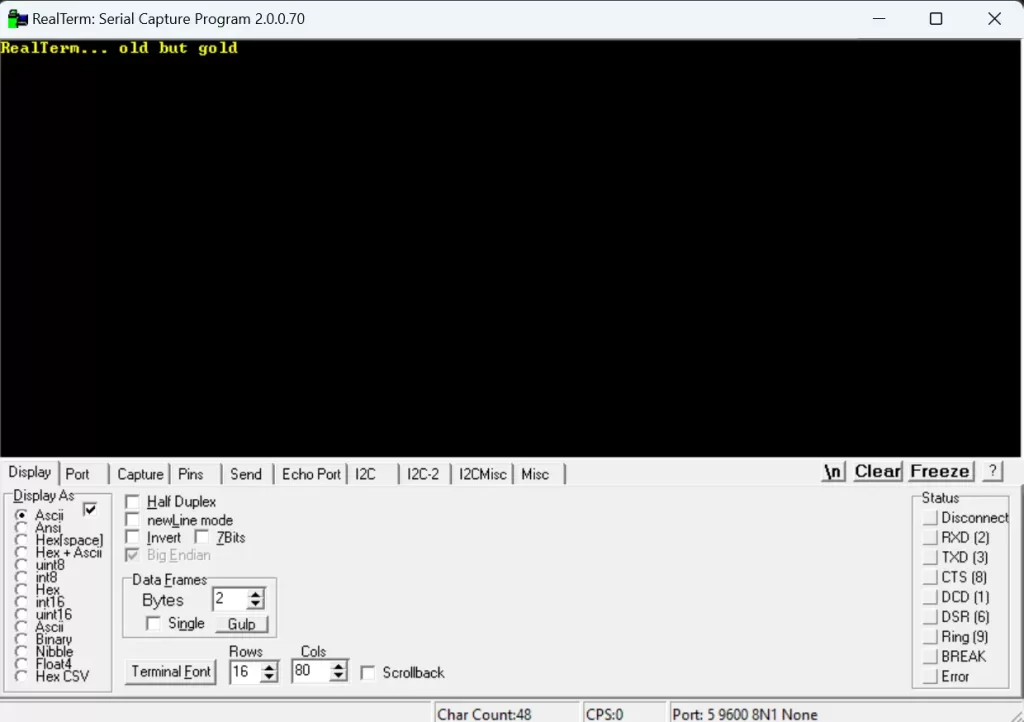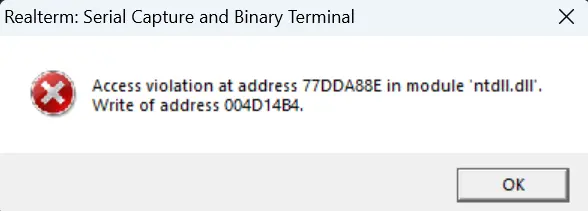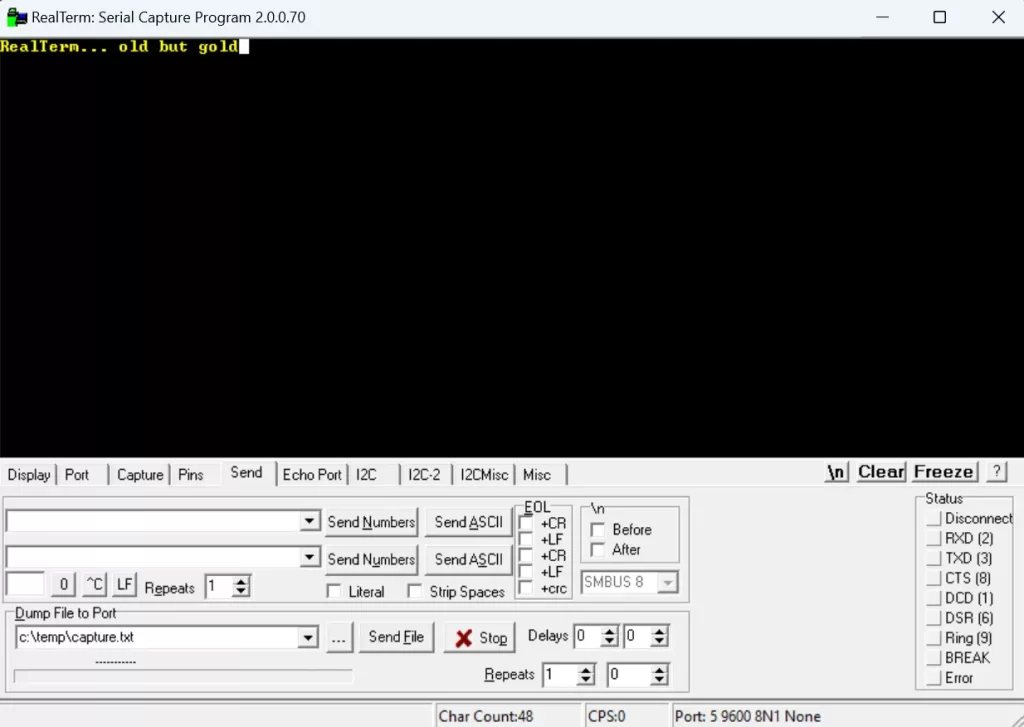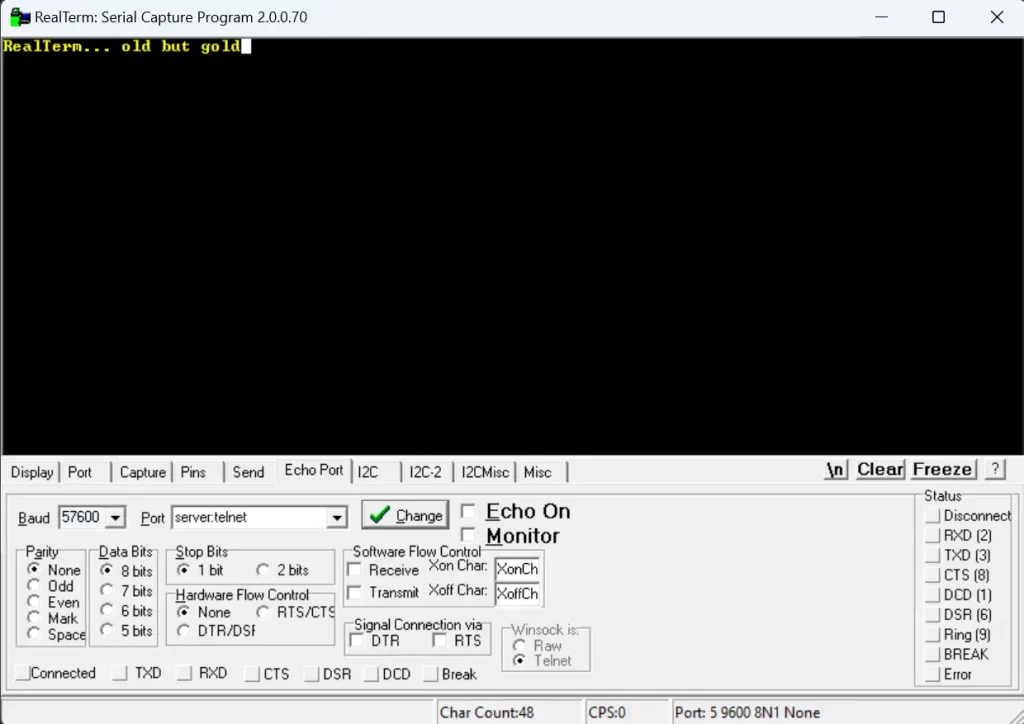Here it is! My favorite software for years! RealTerm has been, and I believe still is, the most used and least easy to understand software. Judging by the downloads from the official repository on SourceForge (https://sourceforge.net/projects/realterm/), I think it is the most downloaded, even though the last update was on October 13, 2017!
As I wrote on the homepage, I placed it in third place for a series of reasons, one of which is that development has been completely abandoned. Before the advent of SerialTool, this software was considered a must-have on the desktop of anyone using the serial port because it was, in fact, the only free software capable of sending a hexadecimal buffer through the serial port, leaving users with few alternatives.
Let’s start by saying that the graphical interface is very basic, unfortunately also very confusing and poorly documented. You have to experiment and see what happens each time.
That said, the author had a certain experience with the typical issues of the serial port and I believe he developed it according to his needs at the time, without much consideration for the fact that others might use it someday. It’s a real jumble of functions mixed together and poorly connected, but despite this, it does what it says.
One of the absolutely unique features for the time was the ability to have pre-stored buffers that were easy to recall. Unfortunately, there are only two, and you have to make do with them!
RealTerm also includes several screens related to an I2C serial converter produced by its sponsor, making it not very practical for general use. I have to admit that while any USB serial converter is sufficient for the serial protocol, things get complicated for I2C because communication with I2C depends on the type of converter used. In other words, you can't do anything with this function unless you buy their dedicated module. There are no alternatives in this regard.
Some time ago, I bought an FTDI USB to I2C converter that I have never tried and I believe I still have somewhere on my desk. Who knows, maybe I'll get the urge to try it and write a review about it.
Continuing with the description of this software, what made it quite unique was that it considered a whole series of peculiarities, such as multiple packet sending and the ability to terminate a buffer transmission by adding CR, LF, or CRC. I’ve always liked this feature, if you can say that.
This software was written in Delphi with Embarcadero's RAD Studio. The source code was published, but if you try to compile it… oops… the author kept the important parts for managing the serial port to himself, so it’s not compilable. I believe they were published only partially because there was also an attempt to charge for a Kernel driver to spy on the serial port. I infer that for this reason, he wanted to maintain control over the license or at least over the part where the author was compensated in exchange for the driver. I don’t know exactly how it worked, but I read some time ago on a forum that a user complained about not receiving the driver directly to his email, and the author publicly responded with a dispute because the payment hadn’t reached him! I deduce that, however good RealTerm might be, it was still written by a hobbyist who worked frequently with the serial port but had no idea of creating commercial software.
Well, I won’t go on any longer; let's look at each screen and comment on them a bit…
